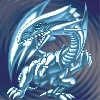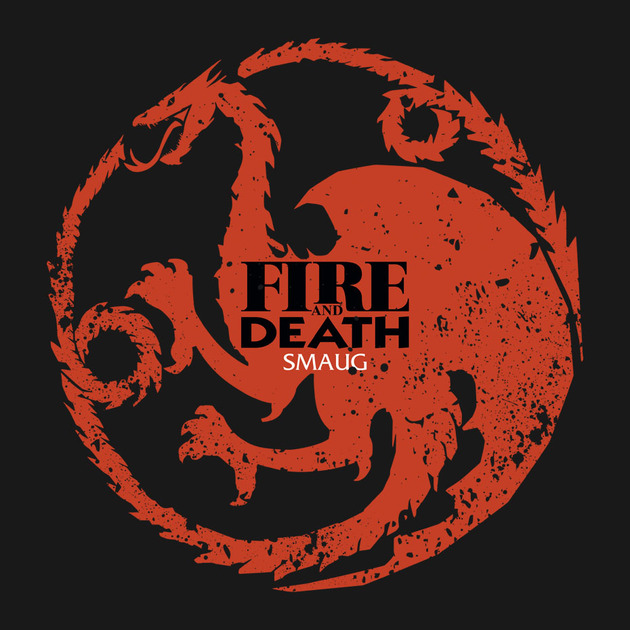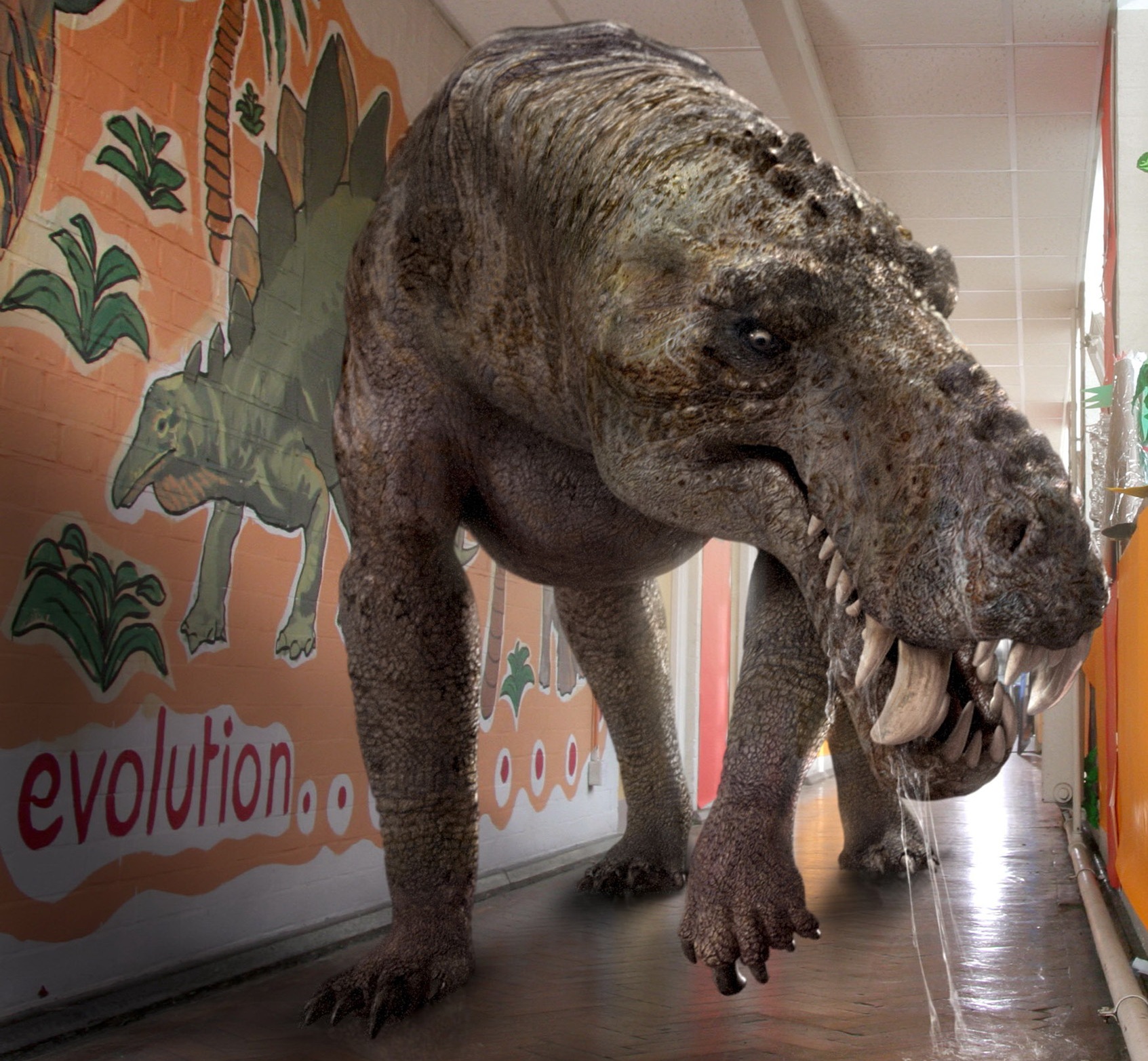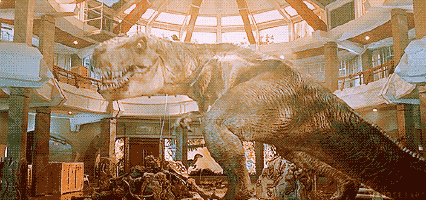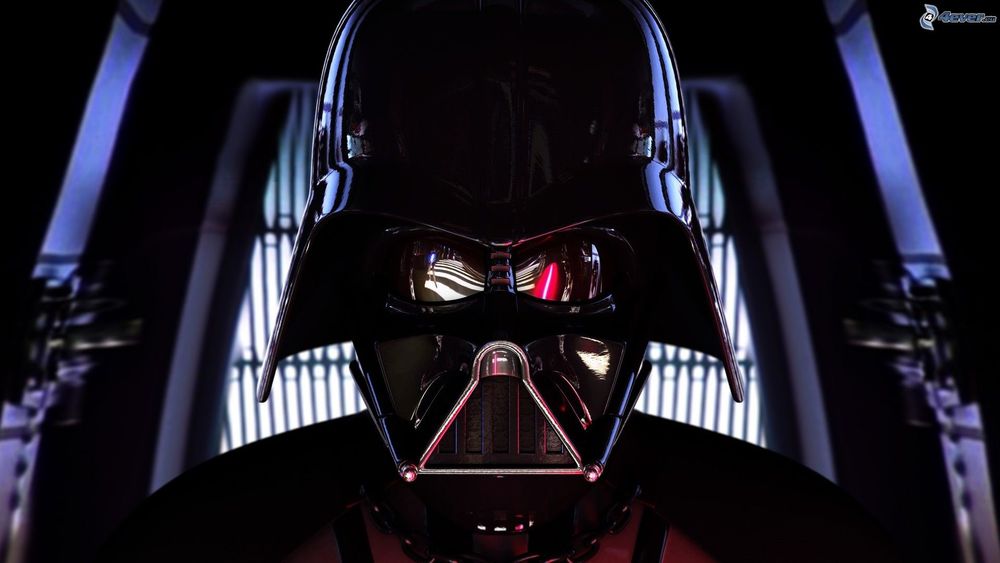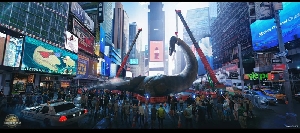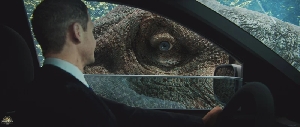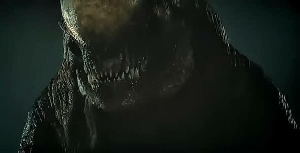10 List of new Dinosaurs on Jurassic World
Jurassic World Forum Topic
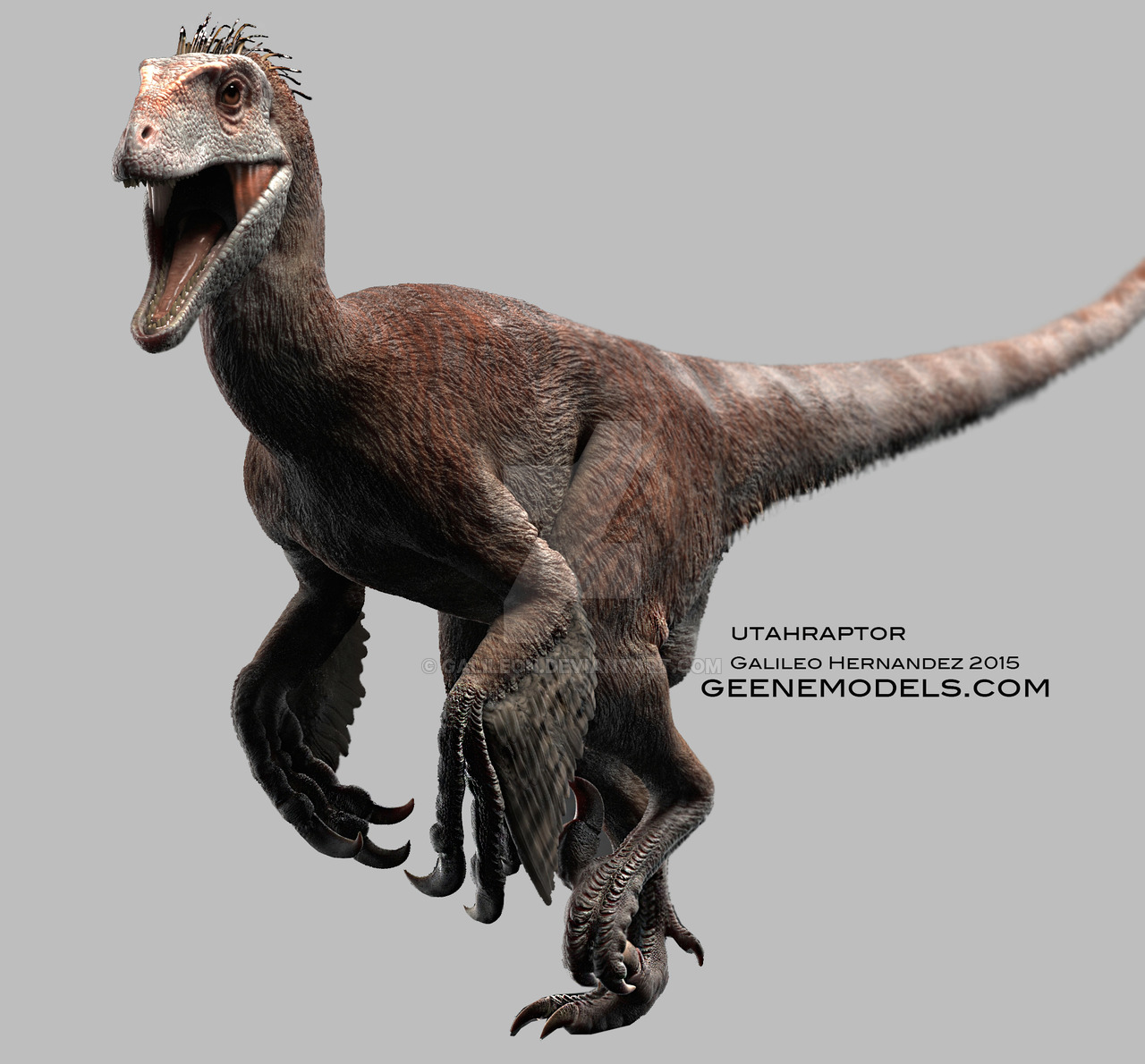
Elite Raptor 007
MemberCompsognathusApr 23, 20145040 Views8 Replieshey, i've now had 10 Species of new Prehistoric Creature in JW
 The days of Jurassic Park 4 being nothing but a glimmer in Steven Spielberg's eye are over. Even though he may not be directing the movie - those duties are being entrusted to newcomer Colin Trevorrow - the buzz is all about bringing the kind of dinosaur adventure fans first fell in love with, along with some new additions and updating. The most recent report from paleontologist Jack Horner (whom Alan Grant was based on) promises a brand new terrifying dinosaur. We at Screen Rant pride ourselves on our dinosaur knowledge, and therefore know a few who could win audiences over. All better than the human-dino hybrids that were originally planned, too. Here are 10 New Dinosaurs You Could See in Jurassic Park 4.
The days of Jurassic Park 4 being nothing but a glimmer in Steven Spielberg's eye are over. Even though he may not be directing the movie - those duties are being entrusted to newcomer Colin Trevorrow - the buzz is all about bringing the kind of dinosaur adventure fans first fell in love with, along with some new additions and updating. The most recent report from paleontologist Jack Horner (whom Alan Grant was based on) promises a brand new terrifying dinosaur. We at Screen Rant pride ourselves on our dinosaur knowledge, and therefore know a few who could win audiences over. All better than the human-dino hybrids that were originally planned, too. Here are 10 New Dinosaurs You Could See in Jurassic Park 4.
Utahraptor
 Everyone remembers the Velociraptors from each of the Jurassic Park films; whether it's their high-pitched whining or click-clack of their deadly hind claws. And even though Spielberg took some liberties with his 'six-foot turkeys,' (actual Velociraptors were under 2 feet tall), Utahraptor puts any debate over realism or dramatization to rest. Essentially, the Utahraptor is everything the raptors are famous for, in a much, much larger package. Reaching lengths up to 25 feet, the Utahraptor's own middle-toe claw was up to 12 inches in length from base to tip, making the previous films' Velociraptors seem like child's play. Every bit as deadly as the descendants movie audiences already know, but five times the size? We'd hope to see them in JP4, but that would make it one short movie. Image
Everyone remembers the Velociraptors from each of the Jurassic Park films; whether it's their high-pitched whining or click-clack of their deadly hind claws. And even though Spielberg took some liberties with his 'six-foot turkeys,' (actual Velociraptors were under 2 feet tall), Utahraptor puts any debate over realism or dramatization to rest. Essentially, the Utahraptor is everything the raptors are famous for, in a much, much larger package. Reaching lengths up to 25 feet, the Utahraptor's own middle-toe claw was up to 12 inches in length from base to tip, making the previous films' Velociraptors seem like child's play. Every bit as deadly as the descendants movie audiences already know, but five times the size? We'd hope to see them in JP4, but that would make it one short movie. Image
Suchomimus
 Suchomimus will automatically have supporters among those who felt that the Spinosaurus of Jurassic Park 3 wasn't a misstep, just something different. At first mistaken for a Suchomimus in the film, we can't help think that might have been the wiser way of going. Described by paleontologist Paul Sereno as "a dinosaur trying hard to be a crocodile" (need we say more?), the Suchomimus possesses a long snout designed to trap fish and claws to keep larger prey still. While the dinosaur's diet consisted mainly of fish and other sea creatures, that doesn't mean it lacks the size, speed or ferocity to do humans some damage. And all without a massive 'sail' to make it seem out of place slamming through forests or man-made structures.
Suchomimus will automatically have supporters among those who felt that the Spinosaurus of Jurassic Park 3 wasn't a misstep, just something different. At first mistaken for a Suchomimus in the film, we can't help think that might have been the wiser way of going. Described by paleontologist Paul Sereno as "a dinosaur trying hard to be a crocodile" (need we say more?), the Suchomimus possesses a long snout designed to trap fish and claws to keep larger prey still. While the dinosaur's diet consisted mainly of fish and other sea creatures, that doesn't mean it lacks the size, speed or ferocity to do humans some damage. And all without a massive 'sail' to make it seem out of place slamming through forests or man-made structures.
Majungasaurus
 It's easiest to think of Majungasaurus as something of a 'battering ram with teeth,' growing up to 20 feet in length, and possessing many of the features characteristic of large predators. But where Tyrannosaurus used crushing bites to take down prey, Majungasaurus wasn't so lucky. Endowed with a smaller snout, this dinosaur had to do its dispatching up close and personal; grabbing a hold of prey, and hanging on until the job was done. To that end, Majungasaurus was built for a fight: interlocking ribs for strength, exaggerated muscle growth over the neck, and even skull bones that were mineralized throughout its skin (making the skin over its face even stronger). Add the fact that these dinosaurs are one of the few known to have practiced cannibalism, and you've got one tough, mean, and unsympathetic killer.
It's easiest to think of Majungasaurus as something of a 'battering ram with teeth,' growing up to 20 feet in length, and possessing many of the features characteristic of large predators. But where Tyrannosaurus used crushing bites to take down prey, Majungasaurus wasn't so lucky. Endowed with a smaller snout, this dinosaur had to do its dispatching up close and personal; grabbing a hold of prey, and hanging on until the job was done. To that end, Majungasaurus was built for a fight: interlocking ribs for strength, exaggerated muscle growth over the neck, and even skull bones that were mineralized throughout its skin (making the skin over its face even stronger). Add the fact that these dinosaurs are one of the few known to have practiced cannibalism, and you've got one tough, mean, and unsympathetic killer.
Coelophysis
 The first glance at Coelophysis may cause some confusion with the Compsognathus seen in The Lost World: Jurassic Park. While this dinosaur bears some similarities to the small pest that turns deadly when attacking in packs, there is one key distinction: the Coelophysis is over 9 feet long. As one of the most ancient dinosaurs experts know of, the Coelophysis was light, nimble, and designed for tracking down and eating smaller dinosaurs. But if working in packs, it's possible the creatures could have taken down much larger prey, aided in no small part by their improved night vision. Luckily, evidence of large herds of Coelophysis do exist. In Ghost Ranch, New Mexico paleontologists discovered over 1,000 skeletons, meaning Coelohpysis hunting packs may have put those of other dinosaurs to shame. We don't expect to see that many in a film any time soon, but even a hundred or so would be hard to survive.
The first glance at Coelophysis may cause some confusion with the Compsognathus seen in The Lost World: Jurassic Park. While this dinosaur bears some similarities to the small pest that turns deadly when attacking in packs, there is one key distinction: the Coelophysis is over 9 feet long. As one of the most ancient dinosaurs experts know of, the Coelophysis was light, nimble, and designed for tracking down and eating smaller dinosaurs. But if working in packs, it's possible the creatures could have taken down much larger prey, aided in no small part by their improved night vision. Luckily, evidence of large herds of Coelophysis do exist. In Ghost Ranch, New Mexico paleontologists discovered over 1,000 skeletons, meaning Coelohpysis hunting packs may have put those of other dinosaurs to shame. We don't expect to see that many in a film any time soon, but even a hundred or so would be hard to survive.
Acrocanthosaurus
 Acrocanthosaurus may not be the most outrageous, fastest or deadliest dinosaur, but it certainly possesses a few interesting traits. As one of the largest theropods on record (outclassed only by Giganotosaurus), the unique ridge running along Acrocanthosaurus' spine means its prey will certainly see it coming, and know their time has run out. Like most predators sharing its structure, Acrocanthosaurus relies on biting for damage, not its underdeveloped forearms. Even though its 'arms' were too weak to attack, all four razor-sharp claws are permanently flexed inwards. When paleontologists hypothesized how strongly the arms were capable of pulling, not slashing, it became clear: once prey fell within the arms, it wasn't escaping. In terms of pure deviance, that attack strategy seems stranger than fiction, and for that reason alone, we feel it deserves a live-action appearance.
Acrocanthosaurus may not be the most outrageous, fastest or deadliest dinosaur, but it certainly possesses a few interesting traits. As one of the largest theropods on record (outclassed only by Giganotosaurus), the unique ridge running along Acrocanthosaurus' spine means its prey will certainly see it coming, and know their time has run out. Like most predators sharing its structure, Acrocanthosaurus relies on biting for damage, not its underdeveloped forearms. Even though its 'arms' were too weak to attack, all four razor-sharp claws are permanently flexed inwards. When paleontologists hypothesized how strongly the arms were capable of pulling, not slashing, it became clear: once prey fell within the arms, it wasn't escaping. In terms of pure deviance, that attack strategy seems stranger than fiction, and for that reason alone, we feel it deserves a live-action appearance.
Tylosaurus
 Dinosaur enthusiasts have been demanding Jurassic Park take a closer look at underwater creatures for years. While many don't explicitly fall under the 'dinosaur' definition, it's about time a seafaring monster got some onscreen respect. And in that realm, few are as terrifying as Tylosaurus. The long-jawed mosasaur ranged in size topping out at over 50 feet in length, but when one is attacking, it's hard to see anything beyond the seemingly endless rows of pointed teeth. Although many ancient sea creatures preferred the depths of the ocean there is evidence to suggest Tylosaurus hunted in shallow seas as well. Meaning a human encounter wouldn't be out of the question. Fossilized stomach contents prove there was little Tylosaurus wouldn't eat if it fell in front of those chilling jaws, making it the kind of movie monster any dinosaur fan could respect.
Dinosaur enthusiasts have been demanding Jurassic Park take a closer look at underwater creatures for years. While many don't explicitly fall under the 'dinosaur' definition, it's about time a seafaring monster got some onscreen respect. And in that realm, few are as terrifying as Tylosaurus. The long-jawed mosasaur ranged in size topping out at over 50 feet in length, but when one is attacking, it's hard to see anything beyond the seemingly endless rows of pointed teeth. Although many ancient sea creatures preferred the depths of the ocean there is evidence to suggest Tylosaurus hunted in shallow seas as well. Meaning a human encounter wouldn't be out of the question. Fossilized stomach contents prove there was little Tylosaurus wouldn't eat if it fell in front of those chilling jaws, making it the kind of movie monster any dinosaur fan could respect.
Carnotaurus
 With a name meaning "meat-eating bull," it goes without saying that Carnotaurus is more of a blunt instrument than a precise predator. But as Jurassic Park films have proven, overpowering prey is as effective as outsmarting them. The name comes from the large horns on its skull, the purpose of which (protection, or hunting) is disputed. The armor plating found over vulnerable areas of Carnotaurus proves this dinosaur means business, and its smaller snout has led to disagreement among experts. Some claim its smaller jaw means it was a snapping, biting predator, while others postulate it had twice the biting force of an American alligator - the strongest bite in the world. An antagonist in Disney's Dinosaur (2000) the Carnotaurus played a chilling role in Michael Crichton's "The Lost World" novel, sporting chameleon-like camouflage. In case it wasn't scary enough already.
With a name meaning "meat-eating bull," it goes without saying that Carnotaurus is more of a blunt instrument than a precise predator. But as Jurassic Park films have proven, overpowering prey is as effective as outsmarting them. The name comes from the large horns on its skull, the purpose of which (protection, or hunting) is disputed. The armor plating found over vulnerable areas of Carnotaurus proves this dinosaur means business, and its smaller snout has led to disagreement among experts. Some claim its smaller jaw means it was a snapping, biting predator, while others postulate it had twice the biting force of an American alligator - the strongest bite in the world. An antagonist in Disney's Dinosaur (2000) the Carnotaurus played a chilling role in Michael Crichton's "The Lost World" novel, sporting chameleon-like camouflage. In case it wasn't scary enough already.
Giganotosaurus

An important lesson was learned with Jurassic Park 3: there just isn't a real substitute for the Tyrannosaurus. Even though the Spinosaurus which defeated it was terrifying in its own right, audiences respond to size and strength, and the massive head and jaws of the original film's villain are beyond compare. Unless we mention the Giganotosaurus; similar to the Tyrannosaurus, only bigger, and with an even larger skull. The fact that Giganotosaurus had a smaller brain and one-third the biting power by comparison may sound like weaknesses, but that also means an even more primitive desire to hunt, and jaws and teeth more likely used to slash and tear, not crush. Also, the Giganotosaurus was faster. The similarities may confuse the casual movie fan, but a bigger, faster, and bite-ier version of the Tyrannosaur would be a welcome addition.
Allosaurus
 Any dinosaur fan is likely to have encountered Allosaurus at some point, with it easily claiming the title of the most well-known and researched of its prehistoric brethren. But a few key features make Allosaurus the right fit for JP4. For starters, the less impressive jaw size is made far more menacing due to the loose connection of the Allosaurus' lower jaw to its skull. In other words, it was capable of stretching its mouth wider than other carnivores, exposing more teeth as a cutting edge. That meant a less powerful bite, but paleontologists believe it compensated by using its jaw "like a hatchet against prey, attacking open-mouthed, slashing flesh with its teeth, and tearing it away without splintering bones." While we imagine what that would look like in live action, it's worth noting that many experts believe the 30-foot-long Allosaurus hunted its prey in packs.
Any dinosaur fan is likely to have encountered Allosaurus at some point, with it easily claiming the title of the most well-known and researched of its prehistoric brethren. But a few key features make Allosaurus the right fit for JP4. For starters, the less impressive jaw size is made far more menacing due to the loose connection of the Allosaurus' lower jaw to its skull. In other words, it was capable of stretching its mouth wider than other carnivores, exposing more teeth as a cutting edge. That meant a less powerful bite, but paleontologists believe it compensated by using its jaw "like a hatchet against prey, attacking open-mouthed, slashing flesh with its teeth, and tearing it away without splintering bones." While we imagine what that would look like in live action, it's worth noting that many experts believe the 30-foot-long Allosaurus hunted its prey in packs.
Troodon
 Although Troodon may not be the biggest, strongest, or most intimidating dinosaur on our list, there's a good chance that it's the creature Horner teased would keep viewers awake at night. Blessed with binocular vision and a sickle-like claw on its second toe, these speedy predators were deadlier than their 7-foot length might imply. It doesn't hurt that their brains are some of the largest in the dinosaur world compared to overall body size - with one paleontologist, Dale Russell hypothesizing that Troodon could have evolved to be as intelligent as human beings - and over-sized eyes which imply that Troodon hunted after dark, with enhanced night vision. The dinosaurs were featured in Jurassic Park: The Game, and supplied more than a few scares and deaths, so we wouldn't be surprised at all to see a pack or two in Jurassic Park 4.
Although Troodon may not be the biggest, strongest, or most intimidating dinosaur on our list, there's a good chance that it's the creature Horner teased would keep viewers awake at night. Blessed with binocular vision and a sickle-like claw on its second toe, these speedy predators were deadlier than their 7-foot length might imply. It doesn't hurt that their brains are some of the largest in the dinosaur world compared to overall body size - with one paleontologist, Dale Russell hypothesizing that Troodon could have evolved to be as intelligent as human beings - and over-sized eyes which imply that Troodon hunted after dark, with enhanced night vision. The dinosaurs were featured in Jurassic Park: The Game, and supplied more than a few scares and deaths, so we wouldn't be surprised at all to see a pack or two in Jurassic Park 4.
Replies to 10 List of new Dinosaurs on Jurassic World
Hey Guest, want to add your say?
Are you an avid Jurassic World fan looking for a dedicated online community of likeminded fans? Look no further! Create your own profile today and take part in our forums and gain XP points for all the content you post!

